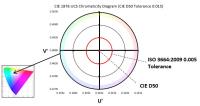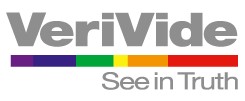 Add My Company
Add My Company
Sign In
Colour Assessment with ISO 3664:2009
05-11-2020

Visual assessment is indispensable to quality control procedures in the printing and graphics industry. Even when accurate colour and density measurements are used, in the end the human eye makes the final decision.
The human observer, typically the photographer, designer, print press operators or publisher will examine colour and visual quality of prints, proofs and photographic transparencies before submitting to the client.
As the surface print being viewed only has the ability to absorb or reflect light, it is ultimately the light source and viewing conditions that determine the final appearance. Which gives rise to the question, under which viewing conditions should professionals evaluate appearance?
D50 illumination
Controlling the lighting and viewing conditions is critical to avoid inaccuracies and misunderstandings in colour reproduction or when communicating colour with your clients. Colour problems may cost you a lot of money and delays in the reproduction that could risk the relationship with your customer.
The International Standards Organisation (ISO) and their representative committees settled on CIE illuminant D50 as the reference light source for the printing and graphics industry. CIE D50 is a simulation of warm natural daylight with a correlated colour temperature (CCT) of 5000 Kelvin, ultimately defined by the published CIE D50 spectral power distribution.
“The illumination used to view colour photographic prints, photomechanical reproductions and transparencies needs to provide adequate amounts of radiant power from all parts of the ultraviolet and visible spectrum to avoid distorting their appearance from that observed under commonly used sources of illumination such as daylight.” (ISO 3664:2009)*
Creating accurate standardised viewing environments requires precise specifications. Colour temperature alone is not enough to accurately qualify a simulation of CIE D50.
ISO 3664:2009
ISO 3664:2009 is essentially a set of detailed specifications used by manufacturers of specialist lighting and viewing equipment to ensure accuracy and repeatability for users when visually assessing colour and appearance. By default, the specifications are also used to set tolerances when testing and certifying the performance of viewing equipment.
“If accurate colour is important to you and your clients, you need to be confident that your printed work is always viewed in controlled and consistent lighting conditions.” (Steve Tongue, Product Development Manager at VeriVide)
For more information on Colour Assessment with ISO 3664:2009 talk to VeriVide
Enquire Now
List your company on FindTheNeedle.
